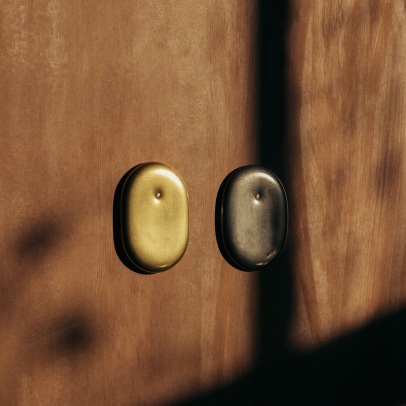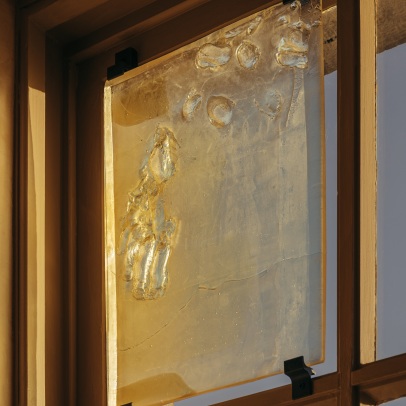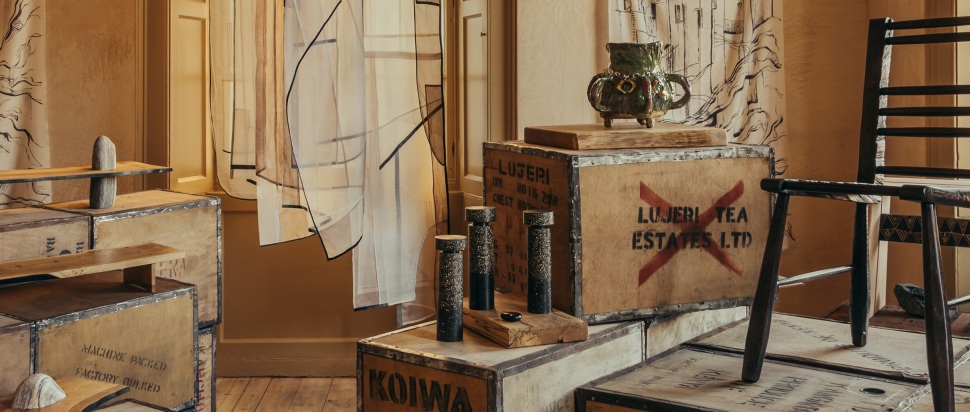Local Heroes: The Grit and the Glamour
Bard's The Grit and the Glamour exhibition presents a confident survey of ambitious new work from 21 Scottish contemporary designers, makers and artists
The Grit and The Glamour is the wonderfully apposite title of a new exhibition that demonstrates how craft can be understood as a practice concerned with bigger ideas than trends or style. Curated and designed by Bard’s founders Hugo Macdonald and James Stevens, the exhibition presents an eclectic mix of ambitious and witty new work from 21 contemporary designers, makers and artists from across Scotland. Unfolding over two floors of Leith’s Custom House, the exhibits are presented rather fittingly on reclaimed tea crates, a little nod to the area’s trading history and a clever way to avoid the need for context-neutralising plinths.
The exhibition curators succeed in providing a moment of pause in a fast-paced world and to create a sense of wonder. There is an elemental quality to the objects displayed that makes each mise-en-scenè both distinctive and complementary. Clay is transformed into bronze in James Rigler’s Hermit Furniture. This sits alongside jewel-like glass wall pieces by Andrea Walsh and Fair Isle blankets by Marie Bruhat; all communicate their tactility in contrasting ways that engender curiosity and covetous feelings in equal parts. Nearby, precision and fragility come together in painted wool silk by Louise Bennetts, artfully etched glass by Juli Bolaños-Durman and 3D printed norigae wall sculptures by Soorin Shin. Radiating poise and balance are Oliver Spendley’s altars in oak, Lewisian gneiss rock, and brass.
The titles of works like Morven Mulgrew’s Town Councillor – a pot-bellied vessel wearing civic livery – and Chalk Plaster’s Cat Throne express a droll irreverence. This is emblematic of the approach of many designers in the Scottish scene – and it's refreshing to see it celebrated. It brings to mind the critical, humorous eye that Droog Design brought to Milan in the early 1990s and stands in sharp contrast to the earnestness that often characterises more traditional craft spaces.

Glass Wall Pieces by Andrea Walsh. Credit: Murray Orr.
It’s clear that Macdonald and Stevens want to pay tribute to the power of crafted objects and their narrative qualities. “Our debut exhibition at Bard is a celebration of the rough and the smooth. Today we are told that a friction-free existence is aspirational. We don’t agree. In our smooth world we need to feel things with our fingers and souls. Craft is a powerful, enlivening force. It is embodied knowledge, culture and skill, and has an anthropological intrigue that is too often overlooked. As with life, it can be gritty and glamorous simultaneously,” Stevens says. “There is a generosity in leaving room for people to bring their own feelings, to say what they like and what they don’t, what they respond to and what leaves them cold.”
Accessing the power of craft to create special moments in the home that carry a message of responsible material sourcing and sustainability is key. “We want to bring audiences items that are precious and will therefore be treasured,” says Macdonald. “Craft has the power to tell stories – bigger stories about ethical making and good practice. The exhibition has allowed us to tell those stories in more detail.”
Some of these stories connect craft to popular culture in entirely unexpected ways. Twenty years ago Catherine Davies and Pascal Carr of All About Willow planted a willow farm on the island of Eigg and built a successful business making historic basket designs. For the exhibition the duo have made what is known as a hen basket for broody hens. This historic design has been in production for centuries and is depicted in Medieval paintings. The context of these baskets was transformed in the 60s by Audrey Hepburn, who turned it into a fashion accessory by carrying one as a handbag. This enduring icon of craft is yet again being made accessible to new audiences, this time with the focus on the methods of its materials and manufacture.

Haptic Light by Jack Brindley. Credit: Murray Orr.
The exhibition is a comprehensive demonstration of the breadth and depth of contemporary Scottish craft. And the ingenuity and resourcefulness of knowledge and material manipulation that is embedded in Scottish cultural identity, past and present; qualities that are evident in Mark Sweeney’s Pepper Pepper Mill. Made from a bio-resin and peppercorn compound; the material itself is interesting enough – pair this with the fact that it is cast and not milled, so that there is barely any waste material and it becomes a must-have piece of design that carries the DNA of Scottish engineering with it.
Explaining how he makes the mill, Sweeney says, “I make a wax plug, which melts to create the cavity that holds the grinding mechanism. My mills look elegant but I think people connect with them when they hear the punchline that they are made from pepper. They smell like pepper too. Luxury is not only about how things look today; we respond to how things make us feel. I feel there’s a duty as a designer to waste as little as possible.”
Elsewhere in the exhibition are encaustic tile trivets by the endlessly inventive Frances Priest, a collection of reimagined Scottish vernacular furniture by Laurence Veitch, as well as Jack Sheahan, Tom Addy and the Orkney Furniture Maker. Golden slabs of glass by Jack Brindley that seem to hold within them the warmth of summer sunlight are juxtaposed with Joshua Williams' characterful ceramic flagons.
Responding to the rise in people buying craft as Christmas presents, Bard are adding some new items to their shop. Watch out for specially commissioned kilt-pins by Wobbly Digital which blend almost Pictish-looking butterflies and fish with the material possibilities of bio-plastics. Small kitchen knives by Clement Knives are made using recycled laughing gas canisters with handles formed from sea-plastic collected around Dumfries and Galloway. Wild clay tea sets are being debuted by wife and husband ceramicists Viv Lee and Jonathan Wade of Ingot Objects while midwinter candlesticks from Cara Guthrie provide light in the darkness.
As Bard celebrate their first year in Edinburgh, it’s clear that the founders have been willing to engage with both the grit and glamour themselves. Their approach is considered, highly crafted and just like this group of makers – an asset to Scotland’s design culture.
The Grit and the Glamour, Bard Scotland, 1 Customs Wharf Leith, 12-6pm Wed-Sun until 22 Dec, reopens 5-28 Jan, Fri-Sun 12-6pm
All works are for sale at Bard and online at bard-scotland.com
@bard.scotland @localheroesdesign
